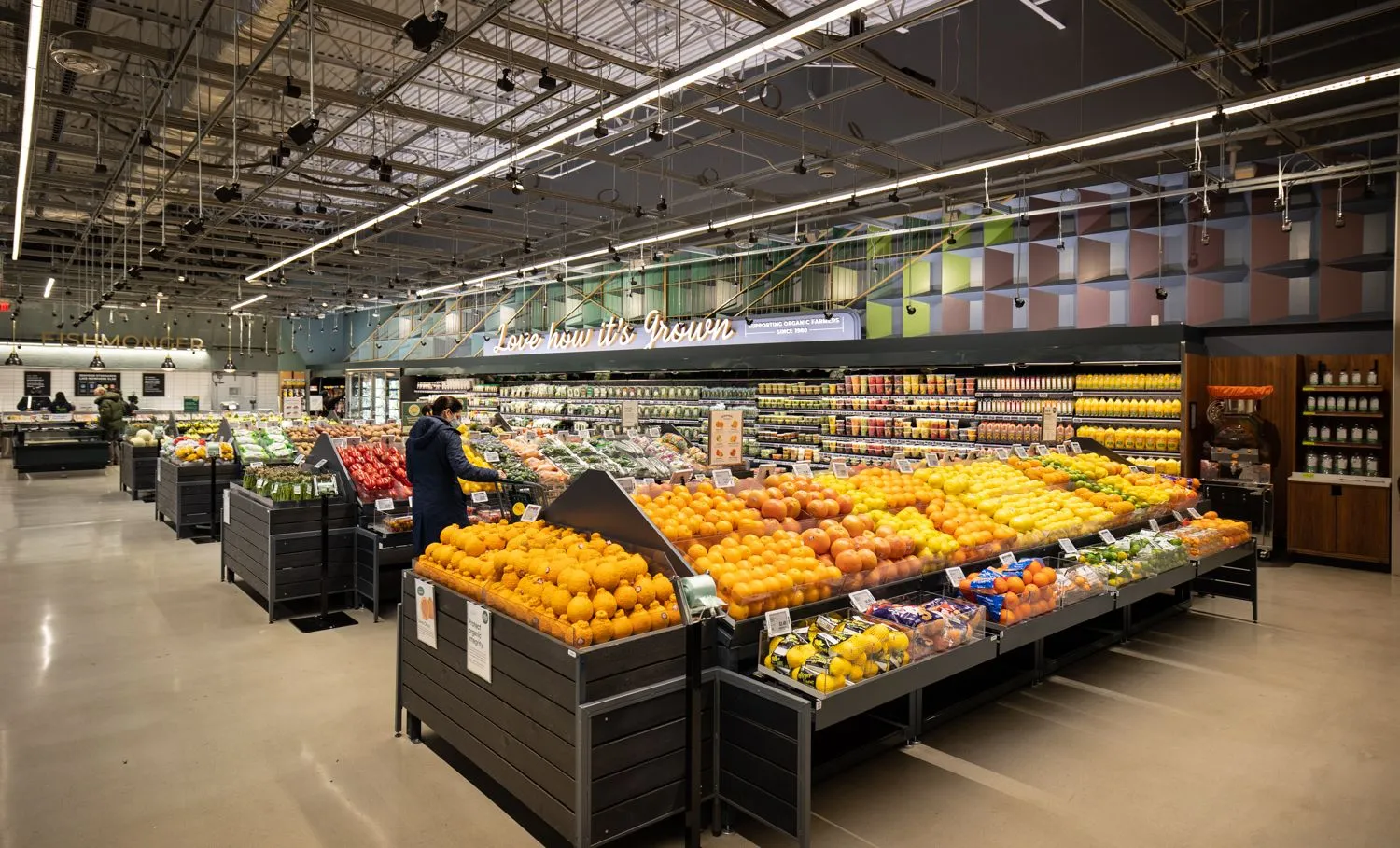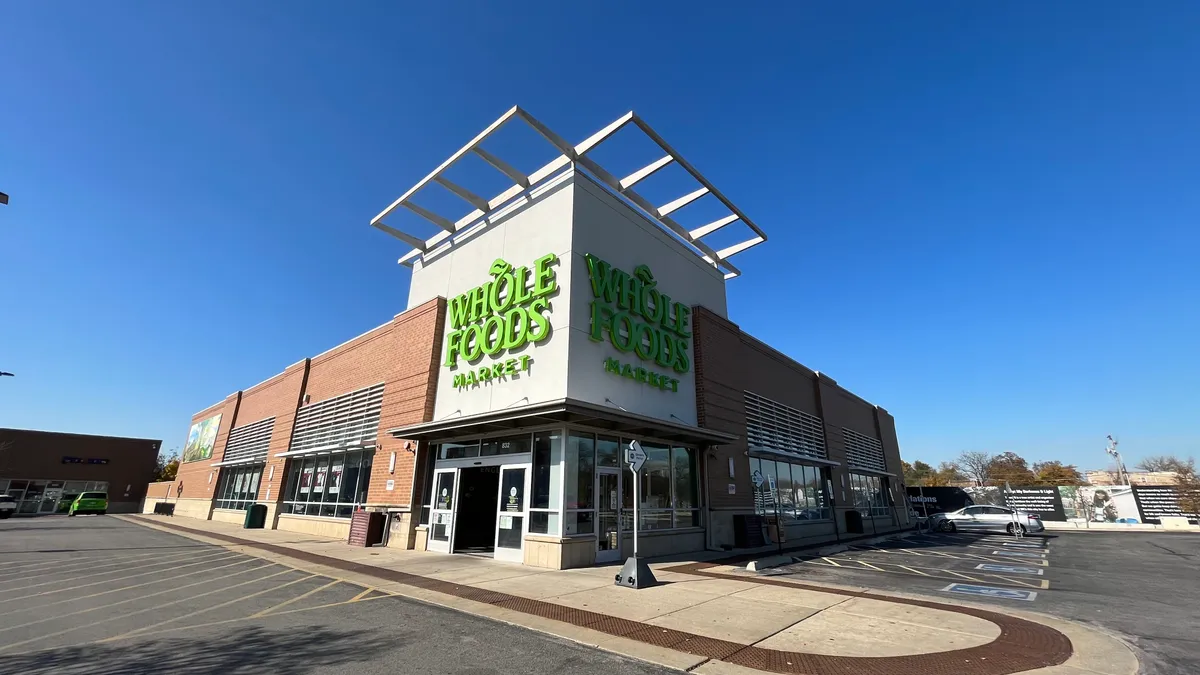Six years after getting acquired by Amazon, Whole Foods wants consumers and the industry to know that it’s still a leader in retail sustainability.
Widely known for carrying a large assortment of natural and organic products, the specialty grocer has continued to roll out new product standards, green initiatives and other programs. This includes rolling out a Sourced for Good supply standard as well as producing all of its delivery packaging using recycled paper.
In 2022, Whole Foods continued to make strides in its packaging, waste and green energy initiatives — and plans to continue those efforts in the months ahead, according to the specialty grocer’s 2022 Impact Report, which covers its sustainability efforts.
Here are some highlights from that report in three key areas.
Sustainable packaging
Whole Foods diverted around 900 tons of packaging in 2022 by changing the way it insulates its delivery orders.
“Insulating material requirements are tracked and adjusted daily to ensure they are only used when necessary,” the report noted.
In 2022, the grocery chain also created and circulated packaging guidelines as well as established a waste diversion handbook for its stores.
“I think a really key thing that happened last year that’s going to be foundational is around our packaging guidelines and partnership with our key stakeholders,” Caitlin Leibert, Whole Foods’ vice president of sustainability, said in an interview. “So really, transparently sharing what is good, better, best and not acceptable in packaging.”
Moving forward, Whole Foods intends to make 100% of its own packaging, including private label and in-store food service packaging, reusable, recyclable or compostable.
Minimizing food waste
As grocers increasingly focus on reducing food waste, Whole Foods Market kept 72.3% of all waste out of landfills and diverted more than 127,000 tons of waste from landfills through recycling efforts.
As of the end of 2022, out of Whole Foods’ 532 stores, 510 locations (96%) had active recycling programs and 449 (85%) had active organic diversion programs, according to the report, which was released July 25.

Whole Foods works in tandem with Food Donation Connection so each location can be matched with a local food rescue or redistribution organization. Whole Foods has sent 2,529 tons of food waste to anaerobic digestion facilities through its Grind2Energy program.
Last year, the grocer donated over 30 million meals and kept nearly 108,000 tons of food waste out of landfills through organic diversion programs like composting. These efforts are working towards cutting food waste in half by 2030 — a goal parent company Amazon is also aiming to achieve.
Updating refrigerant systems
Whole Foods also detailed in the report its progress in retrofitting existing stores to reduce hydrofluorocarbon (HFC) emissions. This comes amid the Amazon-owned grocer’s plan to have all new Whole Foods stores built utilizing natural refrigerant systems with low global warming potential (GWP).
By the end of 2022, 45 locations used low GWP refrigerants; 65 stores used next-generation Solstice N40 refrigerant, which has a lower global warming potential; and 66 stores supplemented traditional energy supply with power from rooftop solar installations.
Already a Whole Foods Market in Brooklyn, New York, has a central refrigeration system that is completely HFC-free.
While this number is low compared to the over 530 locations Whole Foods operate, Leibert noted this is an ongoing initiative that the company intends to evaluate each year.
“Within the build environment, we’re dealing with 500-plus stores that have been built. So really, going back and changing that build environment is something that we have to plan for,” Leibert said.
She added: “We have to build stores to a higher standard, but in addition, we also have to go back and retrofit existing stores. And that, of course, takes a lot of time and resources.”













